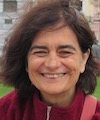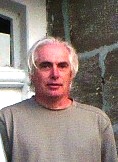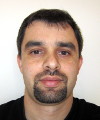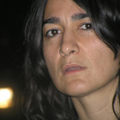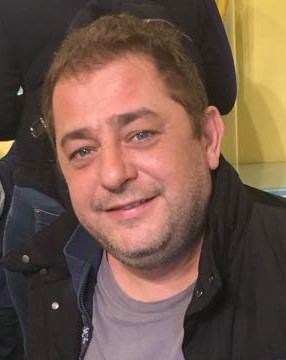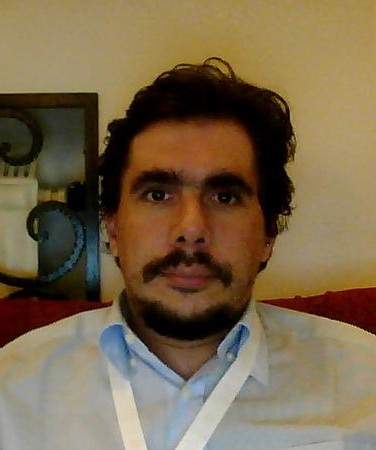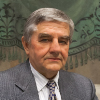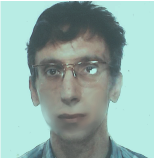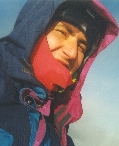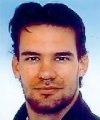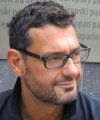Studiare
In questa sezione è possibile reperire le informazioni riguardanti l'organizzazione pratica del corso, lo svolgimento delle attività didattiche, le opportunità formative e i contatti utili durante tutto il percorso di studi, fino al conseguimento del titolo finale.
Calendario accademico
Il calendario accademico riporta le scadenze, gli adempimenti e i periodi rilevanti per la componente studentesca, personale docente e personale dell'Università. Sono inoltre indicate le festività e le chiusure ufficiali dell'Ateneo.
L’anno accademico inizia il 1° ottobre e termina il 30 settembre dell'anno successivo.
Calendario didattico
Il calendario didattico indica i periodi di svolgimento delle attività formative, di sessioni d'esami, di laurea e di chiusura per le festività.
| Periodo | Dal | Al |
|---|---|---|
| I semestre | 1-ott-2013 | 31-gen-2014 |
| II semestre | 3-mar-2014 | 13-giu-2014 |
| Sessione | Dal | Al |
|---|---|---|
| Sessione straordinaria | 3-feb-2014 | 28-feb-2014 |
| Sessione estiva | 16-giu-2014 | 31-lug-2014 |
| Sessione autunnale | 1-set-2014 | 30-set-2014 |
| Sessione | Dal | Al |
|---|---|---|
| Sessione autunnale | 15-ott-2013 | 15-ott-2013 |
| Sessione straordinaria | 9-dic-2013 | 9-dic-2013 |
| Sessione invernale | 18-mar-2014 | 18-mar-2014 |
| Sessione estiva | 21-lug-2014 | 21-lug-2014 |
| Periodo | Dal | Al |
|---|---|---|
| Vacanze Natalizie | 22-dic-2013 | 6-gen-2014 |
| Vacanze di Pasqua | 17-apr-2014 | 22-apr-2014 |
| Festa del S. Patrono S. Zeno | 21-mag-2014 | 21-mag-2014 |
| Vacanze Estive | 11-ago-2014 | 15-ago-2014 |
Calendario esami
Gli appelli d'esame sono gestiti dalla Unità Operativa Segreteria Corsi di Studio Scienze e Ingegneria.
Per consultazione e iscrizione agli appelli d'esame visita il sistema ESSE3.
Per problemi inerenti allo smarrimento della password di accesso ai servizi on-line si prega di rivolgersi al supporto informatico della Scuola o al servizio recupero credenziali
Per dubbi o domande leggi le risposte alle domande più frequenti F.A.Q. Iscrizione Esami
Docenti
 alberto.benvegnu@univr.it
alberto.benvegnu@univr.it
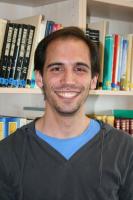
Dos Santos Vitoria Jorge Nuno
 jorge.vitoria@univr.it
jorge.vitoria@univr.it
 elena.gaburro@univr.it
elena.gaburro@univr.it
 bruno.gobbi@univr.it
bruno.gobbi@univr.it
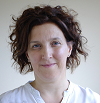
Magazzini Laura
 laura.magazzini@univr.it
laura.magazzini@univr.it
 045 8028525
045 8028525
 gino.mariotto@univr.it
gino.mariotto@univr.it

Mazzuoccolo Giuseppe
 giuseppe.mazzuoccolo@univr.it
giuseppe.mazzuoccolo@univr.it
 +39 0458027838
+39 0458027838
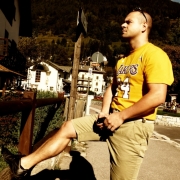
Squassina Marco
 marco.squassina@univr.it
marco.squassina@univr.it
 +39 045 802 7913
+39 045 802 7913
 simone.zuccher@univr.it
simone.zuccher@univr.it
Piano Didattico
Il piano didattico è l'elenco degli insegnamenti e delle altre attività formative che devono essere sostenute nel corso della propria carriera universitaria.
Selezionare il piano didattico in base all'anno accademico di iscrizione.
1° Anno
| Insegnamenti | Crediti | TAF | SSD |
|---|
2° Anno Attivato nell'A.A. 2014/2015
| Insegnamenti | Crediti | TAF | SSD |
|---|
3° Anno Attivato nell'A.A. 2015/2016
| Insegnamenti | Crediti | TAF | SSD |
|---|
Uno o due insegnamenti tra i seguenti per un totale di 12 cfu| Insegnamenti | Crediti | TAF | SSD |
|---|
| Insegnamenti | Crediti | TAF | SSD |
|---|
| Insegnamenti | Crediti | TAF | SSD |
|---|
Uno o due insegnamenti tra i seguenti per un totale di 12 cfu| Insegnamenti | Crediti | TAF | SSD |
|---|
Legenda | Tipo Attività Formativa (TAF)
TAF (Tipologia Attività Formativa) Tutti gli insegnamenti e le attività sono classificate in diversi tipi di attività formativa, indicati da una lettera.
Sistemi stocastici (2015/2016)
Codice insegnamento
4S00254
Crediti
6
Lingua di erogazione
Italiano
Settore Scientifico Disciplinare (SSD)
MAT/06 - PROBABILITÀ E STATISTICA MATEMATICA
L'insegnamento è organizzato come segue:
Catene di Markov in tempo discreto
Analisi di serie temporali
esercitazioni
Obiettivi formativi
Sistemi Stocastici [ Matematica Applicata ]
AA 2015/2016
Il corso di Sistemi Stocastici si propone per obiettivo l'introduzione ai concetti di base della teoria soggiacente alla rigorosa descrizione matematica di dinamiche temporali di grandezze aleatorie. In particolare i prerequisiti del corso sono quelli di un corso standard di Probabilità per Matematica/Fisica.
Si suppone che i discenti siano a conoscenza delle nozioni elementari del calcolo delle Probabilità, così come nell'assiomatica di Kolmogorov, con particolare riferimento alla conoscenza dei concetti di funzione di densità, ripartizione, probabilità condizionata, aspettazione condizionata, teoria della misura (di base),funzioni caratteristiche di variabili aleatorie, etc.
Il corso di Sistemi Stocastici mira, in particolare, a fornire i concetti di base di: spazio di probabilità filtrato, martingala, tempo di arresto, teoremi di Doob, teoria delle catene di Markov a tempo discreto e continuo (classificazione degli stati, misure invarianti, limite, teorema ergodico, etc.), nozioni basilari sulla teoria delle code ed introduzione al moto Browniano.
Una parte del corso è dedicata all'implementazione al calcolatore dei concetti operativi soggiacenti la trattazione dei sistemi stocastici del tipo catena di Markov, tanto a tempo discreto che continuo.
Una parte del corso è dedicata all'introduzione ed allo studio operativo, per via di esercitazione al calcolatore, di serie temporali univariate.
Programma
Sistemi Stocastici [ Matematica Applicata ]
AA 2015/2016
Programma del corso
• Aspettazione condizionata ( Materiale didattico dal Cap.1 di [BMP] )
• Definizione e prime proprietà
• Aspettazioni condizionate e leggi condizionate
• Introduzione ai processi Stocastici ( Materiale didattico dal Cap.1 di [BMP] )
• Spazio di probabilità filtrato, filtrazioni
• Processo stocastico adattato (ad una filtrazione)
• Martingale (prima definizione ed esempi: Catene di Markov)
• Teorema di caratterizzazione di Kolomogorov
• Tempi di arresto
• Martingale ( Materiale didattico dal Cap.3 di [BMP]
• Definizione di processo martingala, risp. super, risp. sotto, martingala
• Proprietà fondamentali
• Tempi d'arresto per processi martingala
• Teoremi di convergenza per processi martingala
• Catene di Markov (CM) ( Materiale didattico dal Cap.4 di [Beichelet] , Cap.5 di [Baldi] )
• Matrici di transizione e CM
• Costruzione ed esistenza per CM
• CM omogenee nel tempo e nello spazio
• Spazio e CM canonici
• Classificazione degli stati di una CM ( e relative classi )
• Equazione di Chapman-Kolmogorov
• Stati riccorrenti, risp. Transienti (criteri di classificazione)
• Catene irriducibili e ricorrenti
• Misure invarianti (stazionarie), ergodiche, limite (Teorema ergodico)
• Processi di nascita e morte (tempo discreto)
• CM a tempo continuo ( Materiale didattico dal Cap.5 di [Beichelt] )
• Definizioni basilari
• Equazioni di Chapman-Kolmogorov
• Distribuzioni assolute e stazionarie
• Classificazione degli stati
• Probabilità e tassi di transizione
• Equazioni (differenziali) di Kolmogorov
• Leggi stazionarie
• Processi di nascita e morte (tempo continuo:primi cenni)
• Teoria delle code (tempo continuo: primi cenni)
• Processi di punto, di conteggio e di Poisson ( Materiale didattico dal Cap.3 di [Beichelt] )
• Definizioni basilari
• Processi stocastici di punto (PSP) e di conteggio (PSC)
• PSP marcati
• Stazionarietà, intensità, composizione per PSP e PSC
• Processi di Poisson omogenei (PPO)
• Processi di Poisson non omogenei (PPnO)
• Processi di Poisson misti (PPM)
• Processi di nascita e morte (N&M) ( Materiale didattico dal Cap.5 di [Beichelt] )
• Processi di nascita
• Processi di morte
• Processi di N&M
° Probabilità di stato dipendenti dal tempo
° Probabilità di stato stazionarie
° Processi di N&M non omogenei
• Introduzione alla teoria delle code ( Materiale didattico dal Cap.5 di [Beichelt] )
• Concetti basilari
• Classificazione A/B/s/m di Kendall
• Esempi esplicitamente trattati:
° M/M/+\infty
° M/M/s/0
# risultati parziali per M/M/+\infty e M/G/+\infty
° M/M/s/+\infty
• Formula di Erlang (Erlang's loss formula)
• Formula di Little
• Moto Browniano (MB) ( Materiale didattico dal Cap.7 di [Beichelt] )
• Definzioni e proprietà basilari
• Trasformazioni del MB (1-dimensionale)
° martingala esponenziale
° martingala varianza
Bibliografia
I testi utilizzati per la trattazione degli argomenti enumerati
nel programma del corso sono
[Baldi] P. Baldi, Calcolo delle Probabilità, McGraw-Hill Edizioni (Ed. 01/2007)
[Beichelt] F. Beichelt, Stochastic Processes in Science, Engineering and Finance, Chapman & Hall/CRC, Taylor & Francis group, (Ed. 2006)
[BPM] P. Baldi, L. Matzliak and P. Priouret, Martingales and Markov Chains – Solve Exercises and Elements of Theory, Chapman & Hall/CRC (English edition, 2002)
Ulteriori interessanti testi sono
N. Pintacuda, Catene di Markov, Edizioni ETS (ed. 2000)
Brémaud, P., Markov Chains. Gibbs Fields, Monte Carlo Simulation, and Queues, Texts in Applied Mathematics, 31. Springer-Verlag, New York, 1999
Duflo, M., Random Iterative Models, Applications of Mathematics, 34. SpringerVerlag, Berlin, 1997
Durrett, R., Probability: Theory and Examples, Wadsworth and Brooks, Pacific Grove CA, 1991
Grimmett, G. R. and Stirzaker, D. R., Probability and Random Processes. Solved Problems. Second edition. The Clarendon Press, Oxford University Press, New York, 1991
Hoel, P. G., Port, S. C. and Stone, C. J., Introduction to Stochastic Processes, Houghton Mifflin, Boston, 1972
Modalità d'esame
Il corso si articola in tre parti
1) Teoria dei sistemi stocastici
2) Introduzione all'analisi di serie storiche
3) Esercitazione al calcolatore ( principalmente basate sulla teoria delle catene di Markov, tanto a tempo discreto che continuo )
L’esame è previsto essere suddiviso in
* uno scritto relativo al primo punto
* un progetto presentato in accordo con il programma effettivamente svolto in laboratorio con il prof. Marco Caliari (punto 3)
* esercitazioni svolte relative al punto (2) con presentazione di un progetto
Il programma d'esame ( scritto ) di cui al punto (1)è quello riportato nella sezione Programma.
Il progetto da presentare con il prof. Caliari va con quest'ultimo concordato.
Il progetto da presentare in relazione al punto (2) verrà (dal/la singola/o studentessa/e, scelto nella seguente lista
========
PROGETTI
========
1-Confrontare i seguenti metodi di stima/eliminazione di trend
*Studio delle differenze al primo ordine
*Smoothing con filtro a media mobile
*Trasformata di Fourier
*Smoothing esponenziale
*Data fitting con polinomio
2-Ricavare ed implementare in il predittore ad un passo dei modelli
FIR(4)
ARX(3,1)
OE(3,1)
ARMA(2,3)
ARMAX(2,1,2)
Box-Jenkins(nb,nc,nd,nf)
3-Confronto tra Prediction Error Minimization (PEM) e Maximum Likelihood (ML) per l'identificazione dei parametri di un modello (richiede una ricerca autonoma sul metodo ML)
4-Implementazione della k-fold cross-validation, ad esempio in linguaggio Matlab/Octave, ed associato test seguendo quanto fatto nel corso delle relazioni relative
5-Spiegazione estesa di (almeno) uno dei seguenti test
*Shapiro-Wilk
*Kolmogorov-Smirnov
*Lilliefors
Tipologia di Attività formativa D e F
Insegnamenti non ancora inseriti
Prospettive
Avvisi degli insegnamenti e del corso di studio
Per la comunità studentesca
Se sei già iscritta/o a un corso di studio, puoi consultare tutti gli avvisi relativi al tuo corso di studi nella tua area riservata MyUnivr.
In questo portale potrai visualizzare informazioni, risorse e servizi utili che riguardano la tua carriera universitaria (libretto online, gestione della carriera Esse3, corsi e-learning, email istituzionale, modulistica di segreteria, procedure amministrative, ecc.).
Entra in MyUnivr con le tue credenziali GIA: solo così potrai ricevere notifica di tutti gli avvisi dei tuoi docenti e della tua segreteria via mail e a breve anche tramite l'app Univr.
Prova Finale
1. La prova finale prevede la preparazione sotto la guida di un relatore di un elaborato scritto (tesi), che può consistere nella trattazione di un argomento teorico, o nella risoluzione di un problema specifico, o nella descrizione di un progetto di lavoro, o di un'esperienza fatta in un'azienda, in un laboratorio, in una scuola ecc. La tesi, preferibilmente redatta in TeX/LaTeX/AMSTeX e usando il pacchetto LaTeX Frontespizio, può essere inviata preliminarmente in formato elettronico ai membri della Commissione Valutazione Tesi e dovrà essere presentata, in duplice copia, al momento della discussione. La tesi potrà essere redatta anche in lingua inglese.
2. La discussione della tesi, che dovrà durare indicativamente tra i venti e i trenta minuti, avverrà davanti ad una Commissione Valutazione Tesi nominata dal Presidente del collegio Didattico di Matematica. ll Presidente della commissione è il professore di ruolo di più alto grado accademico. La Commissione Valutazione Tesi è composta da almeno tre Docenti tra cui possibilmente il Relatore. Ogni Commissione Valutazione Tesi potrà valutare più studenti in funzione del contenuto del lavoro da essi presentato. La discussione della tesi viene effettuata durante i trenta giorni precedenti la data stabilita per la sessione di Laurea, ne viene data adeguata comunicazione ed è aperta al pubblico.
3. La Commissione Valutazione Tesi attribuisce ad ogni studente un punteggio della prova finale che va da zero a cinque. La valutazione della prova finale si articola in maniera tale da tenere conto delle conoscenze acquisite dallo studente durante il lavoro di tesi, del loro grado di comprensione, dell'autonomia di giudizio, delle capacità dimostrate dallo studente di applicare dette conoscenze e di comunicare efficacemente e compiutamente l'insieme degli esiti del lavoro ed i principali risultati ottenuti (si vedano la Tabella 1 per tesi di laurea triennale e la Tabella 2 per tesi di laurea magistrale, in calce al presente regolamento). Il Presidente della Commissione Valutazione Tesi invia una relazione, firmata da tutti i componenti della Commissione, al Presidente della Commissione di Esame Finale indicando per ogni studente il punteggio attribuito per l'esame finale ed un eventuale breve giudizio.
4. La Commissione di Esame Finale, unica per tutti gli studenti di quella sessione di Laurea, viene nominata dal Presidente del Collegio Didattico di Matematica. Il Presidente della commissione è il professore di ruolo di più alto grado accademico. La Commissione di Esame Finale deve essere composta da un Presidente e almeno da altri quattro Commissari scelti tra i docenti dell'Ateneo.
5. La Commissione di Esame Finale determina per ogni studente il punteggio finale sommando la media, pesata rispetto ai relativi CFU, espressa in centodecimi, dei voti degli esami del piano di studi, escluse le attività in sovrannumero, con il punteggio della prova finale. Aggiunge inoltre il punteggio attribuito alla carriera dello studente, da zero a due (si veda la Tabella 3, in calce al presente regolamento). Il voto finale, espresso in centodecimi, si ottiene arrotondando all'intero più vicino (all'intero superiore, in caso di equidistanza) il punteggio ottenuto, senza eccedere 110 centodecimi e assegnando la lode solo con l'unanimità della Commissione di Esame Finale al candidato che abbia raggiunto i 110 centodecimi dopo l'arrotondamento.
6. La Commissione di Esame Finale procede alla proclamazione dei nuovi Laureati in Matematica Applicata o Laureati magistrali in Mathematics con una cerimonia pubblica ed ufficiale.
Documenti
| Titolo | Info File |
|---|---|
|
|
pdf, it, 31 KB, 29/07/21 |
|
|
pdf, it, 31 KB, 29/07/21 |
|
|
pdf, it, 171 KB, 20/03/24 |
Elenco delle proposte di tesi e stage
| Proposte di tesi | Area di ricerca |
|---|---|
| Formule di rappresentazione per gradienti generalizzati | Mathematics - Analysis |
| Formule di rappresentazione per gradienti generalizzati | Mathematics - Mathematics |
| Proposte Tesi A. Gnoatto | Argomenti vari |
| Tesi assegnate a studenti di matematica | Argomenti vari |
| THESIS_1: Sensors and Actuators for Applications in Micro-Robotics and Robotic Surgery | Argomenti vari |
| THESIS_2: Force Feedback and Haptics in the Da Vinci Robot: study, analysis, and future perspectives | Argomenti vari |
| THESIS_3: Cable-Driven Systems in the Da Vinci Robotic Tools: study, analysis and optimization | Argomenti vari |
| Stage | Area di ricerca |
|---|---|
| Proposte di stage per studenti di matematica | Argomenti vari |
Modalità di frequenza
Come riportato nel regolamento didattico, la frequenza è in generale non obbligatoria, con la sola eccezione di alcune attività laboratoriali. Per queste sarà chiaramente indicato nella scheda del corrispondente insegnamento l'ammontare di ore per cui è richiesta la frequenza obbligatoria.
Gestione carriere
Area riservata studenti
Erasmus+ e altre esperienze all’estero
Commissione tutor
La commissione ha il compito di guidare le studentesse e gli studenti durante l'intero percorso di studi, di orientarli nella scelta dei percorsi formativi, di renderli attivamente partecipi del processo formativo e di contribuire al superamento di eventuali difficoltà individuali.
E' composta dai proff. Sisto Baldo, Marco Caliari, Francesca Mantese, Giandomenico Orlandi e Nicola Sansonetto
